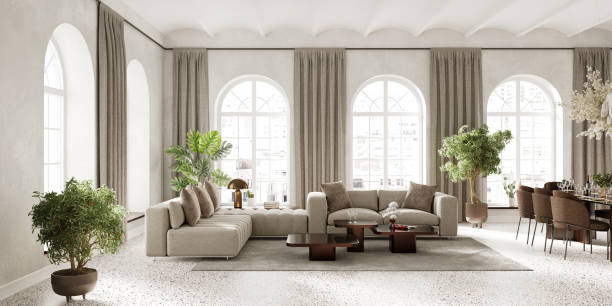Small-space furniture solutions for compact home lounges
Designing a compact home lounge requires thoughtful choices around seating, storage and lighting to make the most of limited square footage. This article outlines practical furniture strategies and material choices that improve comfort, functionality and visual spaciousness without overstating benefits.

Small spaces benefit from intentional furniture choices that prioritize function, flow and comfort. When a compact lounge has constrained square footage, the right combination of seating, storage, lighting and textiles can create a sense of openness while supporting everyday activities like relaxing, entertaining and working. This article explains practical approaches to selecting sofas, arranging layouts, integrating storage and considering flooring, acoustics and ventilation so a small lounge feels adaptable and welcoming.
Seating and sofas
Selecting seating for a compact lounge means balancing comfort with scale. Opt for streamlined sofas with shallower seat depths or modular units that can be reconfigured; armless designs and low-profile backs reduce visual bulk. Consider multi-use seating such as storage ottomans or benches that double as occasional tables. Upholstery in lighter tones and durable fabrics helps maintain a tidy, spacious look while resisting wear in high-use areas.
Smaller rooms can also benefit from a mix of seating types: a compact two-seater sofa, a single accent chair, and a pouf allow flexibility. Keep circulation paths clear by placing seating away from doorways and windows; this improves ergonomics and makes movement feel less restricted.
Storage and shelving
Built-in or wall-mounted shelving maximizes vertical space and frees floor area in compact lounges. Choose shallow shelves and closed cabinetry to hide clutter; open shelving works when items are curated and arranged to avoid visual chaos. Multi-functional furniture—such as coffee tables with drawers or sofas with under-seat storage—adds capacity without adding pieces.
Integrating storage into seating or media units improves layout efficiency. Floating consoles beneath a wall-mounted TV provide storage without occupying much depth, while narrow cabinets along less-used walls keep essentials accessible and out of sight.
Layout and ergonomics
A clear layout strategy guides furniture choice and placement: define activity zones (seating, media, reading) and measure circulation widths to maintain at least 76–92 cm (30–36 inches) where possible. Use area rugs and furniture grouping to anchor zones without overcrowding the space. Ergonomics means ensuring seating heights, tabletop levels and reach distances suit intended uses to avoid awkward arrangements.
Flexible layouts—using lightweight chairs, nesting tables or modular sofas—allow the room to adapt for different needs. Prioritize pathways and sightlines to windows or focal points to enhance perceived space and comfort.
Lighting and acoustics
Layered lighting is essential in small lounges: combine ambient overhead lighting, task lamps near reading areas, and accent lighting to highlight decor or shelving. Mirrors can amplify natural light and make a room feel larger, while dimmers provide control over mood and perceived depth.
Acoustic considerations help maintain comfort in compact spaces where sound can bounce. Soft textiles such as rugs, cushions and upholstery absorb noise; strategically placed curtains and wall hangings also reduce echo. Keeping ventilation and airflow unobstructed by bulky furniture supports both comfort and indoor air quality.
Textiles, rugs and color
Rugs and textiles define zones and add texture without consuming space. Choose rugs sized to fit at least the front legs of seating; smaller rugs can create separate areas, while a single larger rug unifies a compact lounge. Select textiles—curtains, throws and cushions—in coordinated palettes to avoid visual clutter and to support a cohesive color strategy.
Light, neutral colors on walls and larger furniture often increase perceived space, while contrasting accents in cushions or accessories add depth. Flooring that continues into adjacent rooms with minimal transition lines helps create an uninterrupted flow, making the lounge feel more expansive.
Accessories, plants and sustainability
Accessories should be curated and functional: choose a few purposeful items such as a floor lamp, a streamlined media console, or shallow wall art. Plants add visual interest and improve air quality; select sizes appropriate to the room and place them where they won’t block circulation. Curtains and blinds should fit windows precisely to avoid wasting space.
Sustainability can be integrated through durable upholstery, secondhand or refurbished pieces, and materials with longer lifespans. Opting for modular or multi-use furniture reduces the need for frequent replacements and supports a more resource-conscious approach.
In small lounges, attention to scale, material choice and multi-functionality yields spaces that feel larger and more usable. Thoughtful seating and upholstery, smart storage and shelving, careful layout and ergonomic considerations, layered lighting and sound treatment, and mindful textile and color choices together create compact lounges that serve daily needs while remaining comfortable and attractive.





